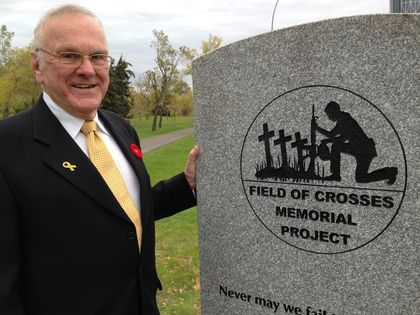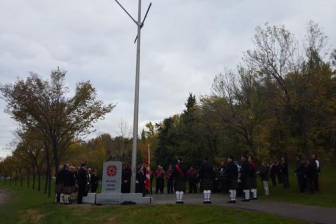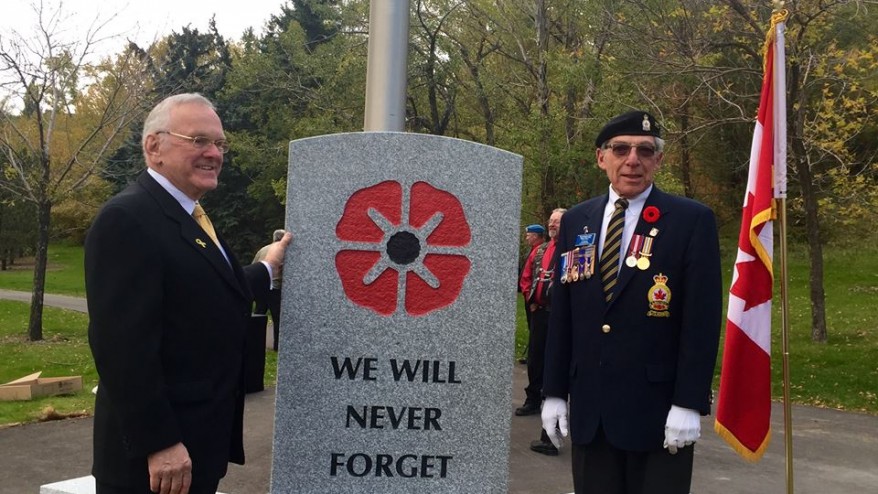
New cenotaph at Calgary’s Field of Crosses unveiled
Eyeing the new Field of Crosses Cenotaph Saturday, Jim Welsh says when you sign up to join the armed forces, you’re signing a blank cheque for up to and including your life. “Every one of the crosses (placed here every year) represents someone from this particular...

Field of Crosses Cenotaph unveiled at special ceremony to honour war heroes
CALGARY – Calgarians gathered Saturday morning for the unveiling ceremony of the Field of Crosses Cenotaph, a permanent reminder of our war heroes and the sacrifice they made. The special tribute took place at 9:00 a.m. along Memorial Drive. Murray McCann is the...

New Cenotaph dedicated at Field Of Crosses
The McCann Family Foundation and the Field of Crosses Memorial Project dedicated a new cenotaph Saturday morning. Organizers said the marker will serve as a permanent legacy to those killed during war and peacekeeping missions. The half hour ceremony began at 9 a.m....

Field of Crosses ceremony in Calgary
Thousands of Calgarians braved bitter cold temperatures to pay their respects at various Remembrance Day ceremonies around the city. Sarah Offin reports from the Field of Crosses.

Soldier killed in Afghanistan honoured at the Field of Crosses
There was another moment of reflection at the field of crosses Monday morning. A special sunrise ceremony was dedicated to Nichola Goddard, a soldier killed in Afghanistan in 2006. The bitter cold didn’t stop a large crowd from gathering, and standing stoically among...

